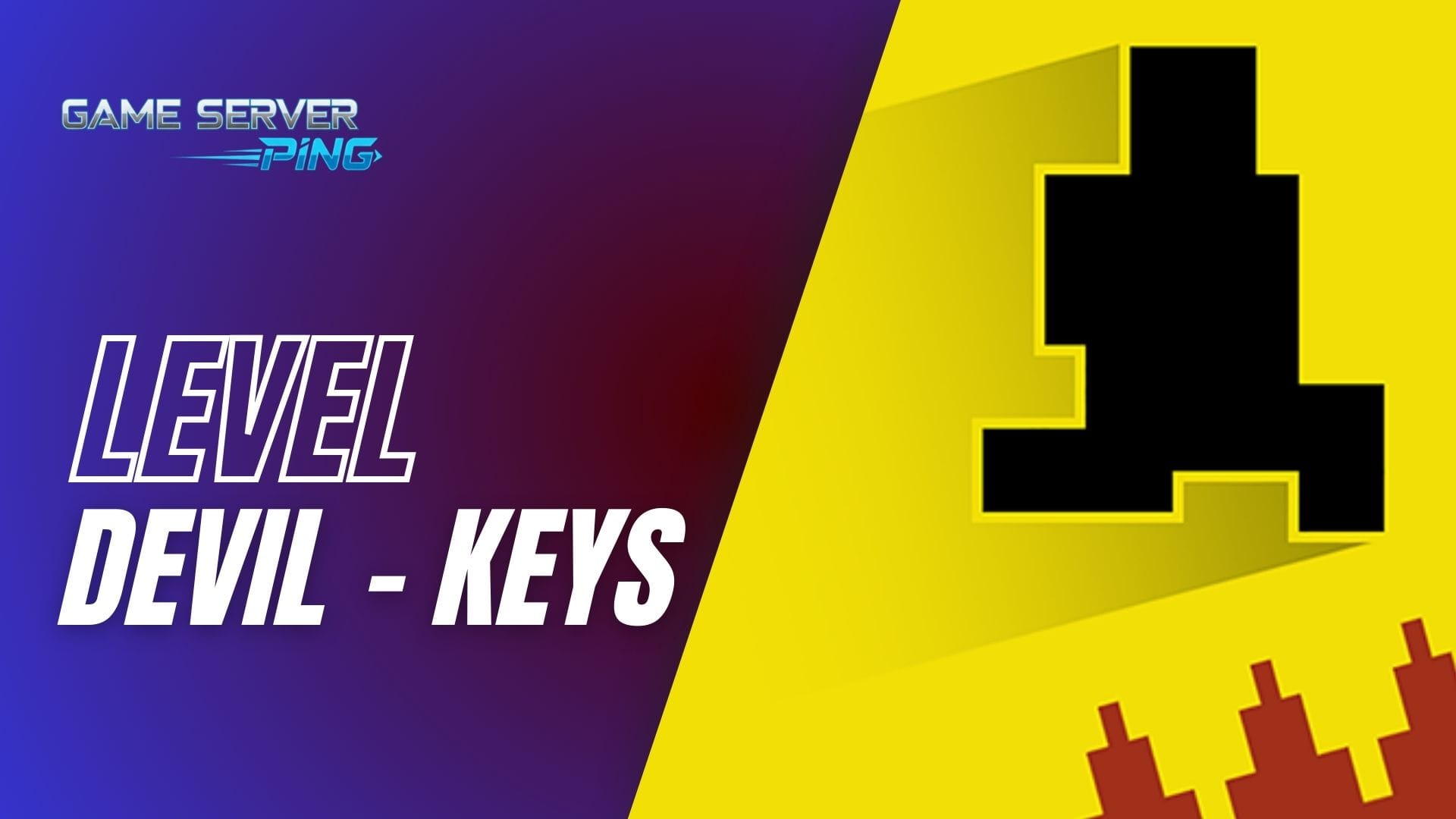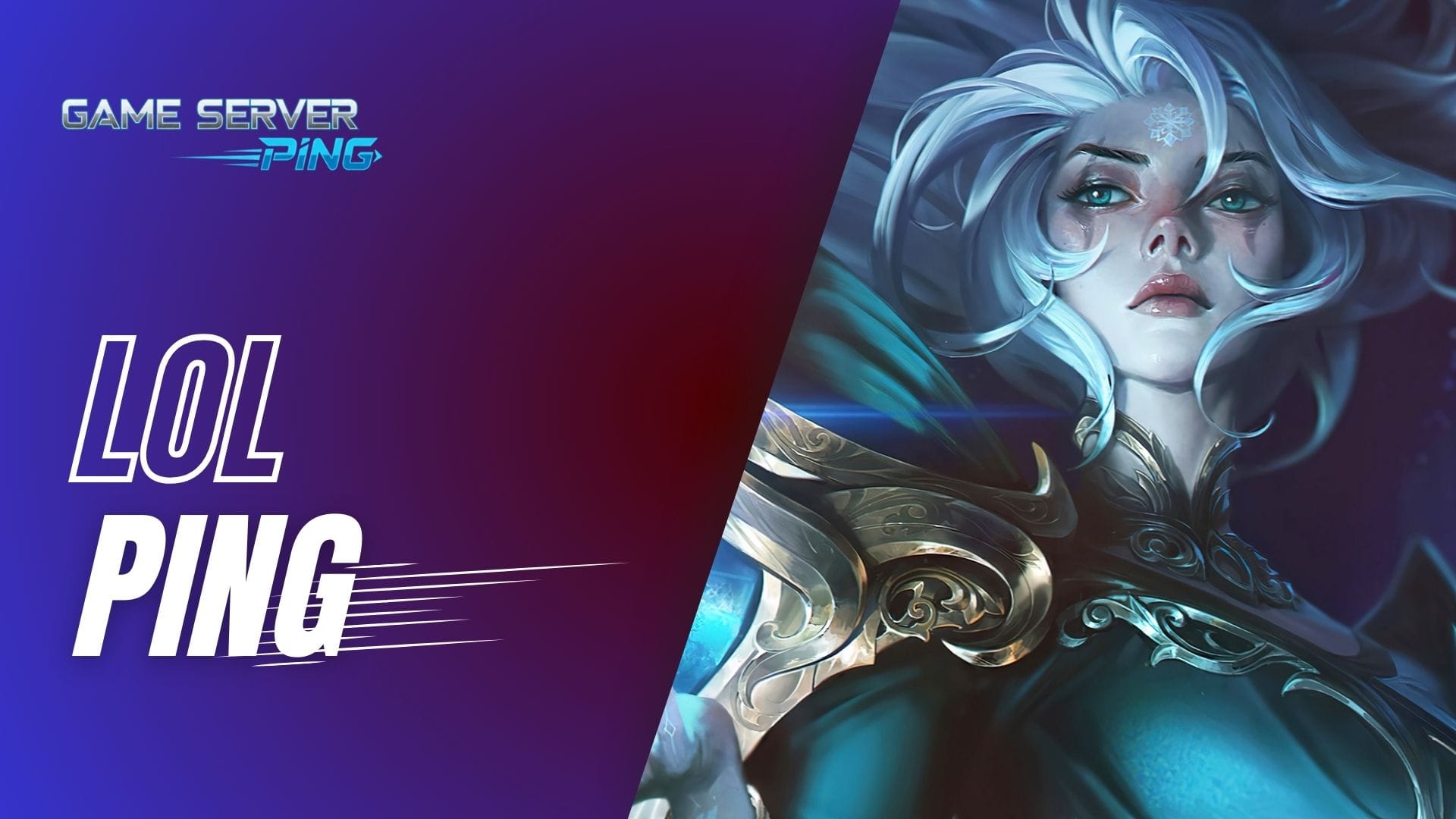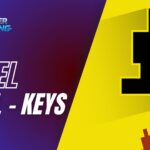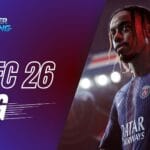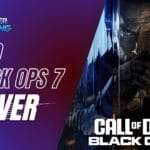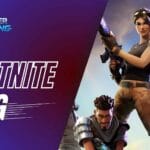Now Reading: 7 Reasons Why Fortnite Lags When Breaking Trees [Solved]
- 01
7 Reasons Why Fortnite Lags When Breaking Trees [Solved]
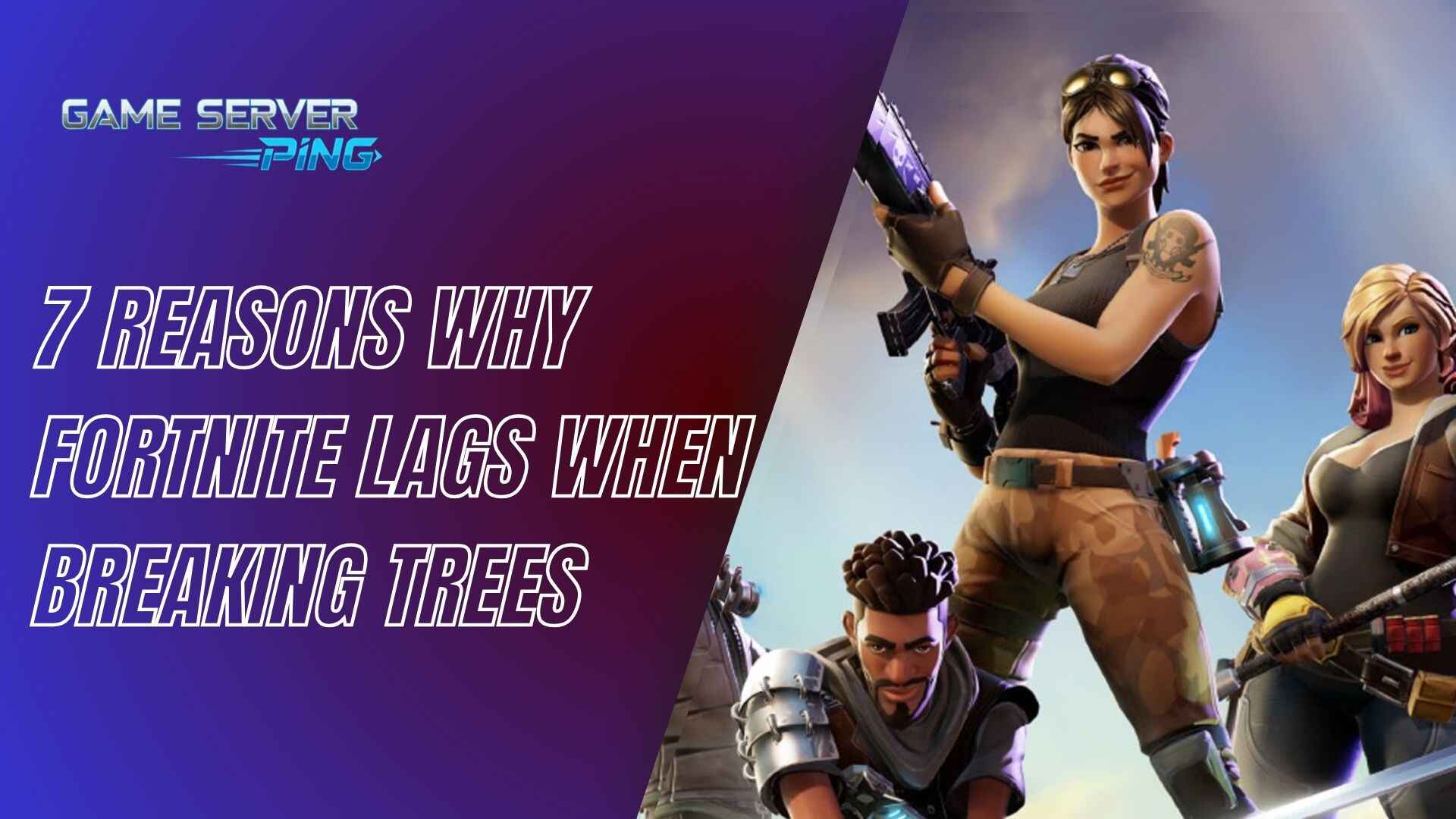
7 Reasons Why Fortnite Lags When Breaking Trees [Solved]
If you’ve played Fortnite for any length of time, you’ve probably noticed a strange delay when you swing your pickaxe at a tree, hay bale, or even a doghouse. Instead of breaking instantly, the object lingers for a moment before disappearing. Players often describe this as “lag when tree breaks,” and while it may sound small, in the middle of a competitive match it can feel game-breaking.
What Players Mean by “Lag When Tree Breaks”
When players complain about this issue, they’re not just talking about frame drops or graphics stutters. The problem usually comes from a slight mismatch between what happens on your screen and what the server actually registers. You hit the tree, but the server takes a beat longer to confirm it—leaving you staring at an object that looks destroyed but hasn’t updated yet. A quick Fortnite ping test often reveals whether your connection is adding to the delay.
Why This Issue Feels Game-Breaking in Competitive Play
In competitive Fortnite, every millisecond matters. That tiny delay when farming can cost you:
- The wood you needed to throw up a defensive wall.
- A chance to escape because the tree didn’t drop materials in time.
- Your position being revealed due to delayed breaking sounds.
What makes it worse is the unpredictability—sometimes objects break instantly, sometimes they lag. Competitive players often compare it to the smoother server handling seen in games like Valorant, where even a small ping test shows how consistent latency management changes gameplay.
Lag when breaking objects isn’t just about Fortnite—it’s tied to how online servers process actions. If you want to see how your overall connection performs across multiple titles, tools like a general gaming speed test can give you a clearer picture of whether the issue is on your end or Epic’s servers.
Understanding Fortnite Lag When Breaking Objects
What Actually Happens When a Tree Lags Before Breaking
The weird thing about this lag is that the game doesn’t completely fail. When I swing at a tree, I always get the wood right away — it shows up in my inventory instantly. The problem is the tree itself just… stays there for a second or two before vanishing. What’s really happening is that my game client is telling the server, “Hey, this object is destroyed,” but until the server confirms it for everyone else in the lobby, the object doesn’t fully disappear from my screen.
It’s almost like breaking a tree has two steps: first, the client says it’s gone (that’s why I get the mats instantly), then the server broadcasts the change (that’s when it finally vanishes visually).
Difference Between Visual Lag vs. Server Delay
A lot of players — including me at first — mistake this issue for bad FPS or stuttering. But it’s not really about frame drops, it’s about server delay. Visual lag happens when your device struggles to keep up with animations, but server delay is when the game waits for confirmation from Epic’s servers. Fortnite prioritizes combat actions (like shooting and building) over environment destruction, so breaking objects is always a lower priority in the server queue. That’s why your gunshots feel instant while a fence takes an eternity to fall apart.
This is also why sometimes you can run a smooth game with high FPS and a solid internet speed test, but still feel this exact delay. It’s less about your device performance and more about the server handshake.
Why One-Hit Objects (trees, hay bales, dog houses) Seem the Worst
For me, this issue always feels worse when I’m breaking one-hit objects. Dog houses, hay bales, even small chairs — they almost never break instantly. You get the loot or resources, but the object lingers awkwardly, sometimes even reappearing for a split second before finally vanishing.
The reason is simple: since these objects don’t really affect gameplay balance, Epic’s servers don’t treat them as urgent. The game would rather make sure a shotgun blast connects on time than worry about whether your hay bale breaks instantly. From a competitive perspective, it makes sense — but as a player, it still feels like the game is trolling you.
Player Reports: The “Spidey-Sense” Effect (Lag Signaling Nearby Enemies)
Here’s where it gets interesting — a lot of players, myself included, swear that lag when breaking objects sometimes signals that an enemy is nearby. I’ve lost count of the times I hit a tree, noticed the delay, and within seconds, heard footsteps or saw another player pop into view.
Some believe this happens because the server suddenly has to process more data as another player enters your render distance. Others think it’s just coincidence. But honestly? It feels so consistent that I treat it like a little built-in warning system. If I break something and it lingers too long, I immediately go on alert.
It’s not a perfect science, but over time I’ve started thinking of this lag less as “broken gameplay” and more like an accidental “sixth sense” — even though, let’s be real, it’s still frustrating when it costs me a fight.
Technical Causes Behind the Lag
Server-Side Processing of Destruction Events
Every time we swing at a tree, a hay bale, or a dog house, the action isn’t finalized locally on our device — it gets sent to Epic’s servers first. The server checks and confirms the destruction event, then broadcasts that change to everyone else in the match. Until that confirmation comes back, the object lingers on screen. This “server check” is intentional, because if the game let the client handle it alone, cheaters could easily abuse it by editing or breaking objects instantly without the server knowing. The downside is that legit players like us feel the delay as lag.
Network Latency and High Ping Issues
Even if the server is doing its job, network latency plays a massive role. If your ping is high, it means there’s a noticeable delay between when you hit an object and when the server acknowledges it. That’s why some players with 20ms ping barely notice this issue, while others at 80ms+ feel like every chair and tree has a mind of its own. The frustrating part is that you can still have fast internet speeds but bad routing to Fortnite servers — which is exactly why tools like a Fortnite ping test are so useful. They show you how your connection is actually performing in-game terms, not just in Mbps.
Prioritization of PvP Combat Over Object Breaking
Epic has made it clear — combat comes first. The game will always prioritize actions like bullets registering, builds placing, or edits happening over environmental destruction. That’s why when I get into a shotgun fight, the game feels snappy, but if I’m smashing a hay bale in Fatal Fields, it lags for a second. It’s a trade-off: smoother fights but jankier farming. For competitive players, this design makes sense, but when you’re looting or trying to rush into a building, it can feel like the game is punishing you for breaking the wrong object at the wrong time.
GPU & CPU Performance Bottlenecks
Not every lag spike is server-based. On older PCs or laptops, the GPU and CPU can bottleneck when handling Fortnite’s constant rendering of destruction physics and environmental changes. If your graphics card is already struggling to push consistent FPS, smashing objects can trigger stutters or delays. That’s why lowering graphics settings — shadows, post-processing, view distance — can sometimes smooth out this issue. It doesn’t fix the server delay, but it prevents your hardware from adding extra lag on top of it.
Console Limitations (Xbox One, PS4) vs. Next-Gen Hardware
Playing on an older Xbox One or PS4 makes this lag feel way worse than on next-gen consoles like PS5 or Xbox Series X. I noticed the difference firsthand when I upgraded — suddenly, objects broke smoother, load times were shorter, and stutters almost disappeared. The older consoles just don’t have the same processing speed or memory to handle Fortnite’s constant updates and heavy player counts. If you’re on last-gen hardware, adjusting settings and clearing cache can help, but you’ll never get the same fluid experience as newer systems.
Early Game Server Load – 100 Players, 100 Connections
The start of every match is when the lag feels the worst. Think about it — the server is juggling up to 100 players dropping, looting, shooting, and breaking objects all at once. It’s like rush hour traffic on a highway; everything moves slower because the system is overloaded. Once players start dying off and connections thin out, breaking objects feels a little smoother. This is why those first few minutes in Tilted Towers or Mega City can feel so chaotic — it’s not just the enemies, it’s the server straining under the load.
Common Player Experiences (Community Insights)
Lag Triggered When Ambushed by Opponents
A lot of players swear the lag shows up at the worst possible moment — right when someone sneaks up on them. You’re farming quietly, swing at a tree, and suddenly the game stutters or delays the break. The “Spidey-sense” theory comes from this exact moment: some believe that lag on objects is almost like the game warning you another player is nearby. Whether it’s just coincidence or a server-side strain caused by more players in the area, it’s a shared frustration across Reddit threads and Discord chats.
Delayed Sound Effects (objects breaking seconds later)
Another common complaint is when the visual break happens, but the sound comes seconds later. You’ll see the hay bale explode, move on to grab loot, and only then hear the crunch. That desync between visuals and audio makes the game feel off, and in competitive matches, it’s distracting enough to throw off rhythm or even mislead you into thinking another player is farming nearby.
Rubberbanding and Stutter After Destroying Items
Rubberbanding usually happens when there’s a hiccup in the server connection, but many Fortnite players specifically notice it right after destroying certain items. You swing, the object disappears, and suddenly your character jerks backward or repositions slightly. In a firefight, this isn’t just annoying — it can cost the fight. Farming mats shouldn’t feel like teleporting, but on busy servers, that’s exactly what happens.
Inconsistent Object Hits (dog houses sometimes 1-hit, sometimes 3-hit)
Dog houses, crates, and other “small” props are infamous for their inconsistency. Sometimes they break in one clean hit, other times it takes three or more swings. This isn’t just bad luck — it’s usually the result of delayed server confirmation. Since these objects have low health, any delay makes it look like the game is indecisive. For competitive grinders, that inconsistency feels unfair, especially when speed looting in early-game chaos.
Environment-Specific Issues (hay bales, barn doors, boxes in semis)
Certain props are reported way more often than others:
- Hay bales in Frenzy Fields or old Fatal Farms.
- Barn doors that sometimes open instantly, sometimes lag.
- Boxes in trucks/semis that can stutter the game when destroyed.
It’s not clear if these are badly optimized assets or just unlucky hotspots for server load, but enough players have noticed patterns in these areas to make it a legitimate complaint.
Disconnects at Specific Locations (Prison, Greasy Grove, Junk Junction)
Back in Chapter 1 especially, players reported disconnects tied to certain POIs — most famously Prison, Greasy Grove, and Junk Junction. You’d be mid-fight, break a wall or object, and suddenly get kicked to the lobby. While Epic patched most of these issues, modern equivalents still pop up after big updates. Newer POIs sometimes bring the same problem, proving that Fortnite’s massive map updates can introduce fresh lag hotspots tied to specific destruction events.
Why the Lag Happens More Early Game
Server Prioritization of Gunfights Over Building & Farming
If you’ve ever hot-dropped into Tilted or Frenzy and noticed your first tree breaking late, it’s not your imagination. Fortnite’s servers are built to prioritize player-vs-player combat first. That means bullets, shotgun blasts, and player movement get processed before farming events. Early game is the busiest moment, with dozens of players firing, building, and editing at once. Farming ends up at the bottom of the queue, which is why objects often stutter or refuse to break instantly when the lobby is still crowded.
High Player Density in Hot Drops (Tilted, Fatal Fields, Anarchy Acres)
The closer you land to a hotspot, the worse the lag feels. When 20 people land at Tilted Towers, every structure break, every edit, and every build fight is funneling into the same server space. Even if your ping is normally stable, the sheer density of actions overwhelms the system. That’s why objects in “quiet” POIs break smoothly, but trees or fences in Tilted might take a full second to register. It’s not that your PC or console suddenly got worse — it’s that the server is drowning in requests.
Object Priority Queues – Why Small Items Update Slowly
Not all objects are treated equally in Fortnite. Bigger items like buildings, ramps, and walls are prioritized since they affect player cover and competitive fairness. Smaller props — like hay bales, fences, or dog houses — are pushed into a lower priority queue. That’s why these objects feel inconsistent, especially in early game chaos. When 80 players are building and fighting, your poor little dog house break just doesn’t make it to the top of the server’s to-do list.
Impact of Regional Server Load (EU, NA East, NA West)
Another overlooked factor is regional demand. If you’re on EU or NA East during peak hours, the servers are packed. Even with a good ping test, you might feel more object lag simply because the server itself is under heavy strain. Players in smaller regions (like OCE or Middle East) sometimes report fewer issues, not because the code is different, but because there are fewer players overwhelming the system. This explains why some players can farm smoothly in late-night lobbies but struggle during prime time.
How to Reduce Fortnite Lag When Breaking Trees & Objects
Optimize Network Settings
One of the biggest reasons object lag happens is network-related, even if your regular internet feels fine. From my own experience, switching from Wi-Fi to a wired Ethernet cable made Fortnite feel far more consistent when farming mats. Wi-Fi drops tiny packets that don’t matter when streaming Netflix, but in Fortnite, they cause those half-second delays when trees don’t break instantly.
Another overlooked fix is changing your DNS servers. By swapping to something like Google DNS (8.8.8.8) or Cloudflare (1.1.1.1), response times get faster, which helps Fortnite servers confirm destruction events more quickly.
And before you jump into ranked or scrims, it’s smart to check your connection with a Fortnite Ping Test tool. That way, you know if the lag is your ISP, your setup, or just the game itself acting up.
Console & PC Settings Adjustments
Even if you’ve got great internet, your own system settings can cause mini stutters. On PC, lowering shadows and post-processing frees up GPU power so the game has more headroom to handle server updates smoothly. On console, disabling overlays like Xbox Game Bar or PlayStation party recording helps cut down random freezes.
Sound lag is another big complaint — the object breaks visually, but the sound effect comes later. Adjusting sound quality from High to Medium can reduce audio delays, especially on older systems. And don’t forget to close background apps like Discord overlays, Spotify, or Chrome tabs, which quietly eat resources.
If you’re unsure whether your PC setup is strong enough, you can always run a quick Internet Speed Test for Gaming to make sure it’s not bandwidth bottlenecks causing the lag.
In-Game Strategies to Work Around Lag
Sometimes, the best solution isn’t technical but tactical. For example, I’ve learned to hit a tree once and move on — even if it lags, the object eventually disappears and the mats still count. In hot drops, I avoid farming in the first 20 seconds; it’s safer to grab a weapon first and then farm once the area clears.
And weirdly, the lag itself can be useful. If a tree suddenly takes forever to break, I treat it as a warning signal that players might be nearby. A lot of pros do the same — instead of tilting, they use it as intel.
Hardware Upgrades
Let’s be honest: Fortnite still runs on older Xbox One and PS4 systems, but those consoles choke hard in busy lobbies. Upgrading to Series X/S or PS5 makes farming feel buttery smooth in comparison. On PC, balance matters more than brute force. A strong CPU paired with a mid-tier GPU often outperforms an expensive GPU bottlenecked by a weak processor. If you’re running outdated parts, this could be why object lag feels worse for you than others.
Server Region Adjustments
Finally, don’t ignore your server region settings. Fortnite matchmaking sometimes defaults you to auto, which isn’t always the best choice. Manually locking to the closest region (NA East, EU, Asia, etc.) often cuts ping spikes that cause break delays.
And unless you’re playing casually with friends abroad, avoid cross-region lobbies. Playing from Europe on NA West servers, for example, can add 100+ ms of latency, which makes breaking objects feel like swinging at ghosts. If you ever wonder why your ping seems fine but Fortnite still lags, I’ve broken down 10 reasons why Fortnite ping is high even with good internet speed in another guide — it’s worth checking if server mismatch is the hidden culprit.
Broader Impacts of Lag on Gameplay
How Lag Affects Building Battles
In Fortnite, timing is everything. When you swing at a wall or ramp to replace it but the destruction lags, your build battle flow breaks instantly. I’ve lost countless 50/50 box fights because my pickaxe swing didn’t register on time, giving my opponent the split-second edge to place their own wall. Lag when breaking structures doesn’t just slow down farming — it completely shifts the pace of a fight, especially when edits and counter-builds are involved.
Looting Delays & Missed Opportunities
Another underrated issue is looting. Imagine breaking a crate in early game, only for it to visually disappear but still block you from grabbing the weapon inside. Those few seconds can mean the difference between picking up a shotgun or watching an enemy grab it first. I’ve had matches where a delayed hay bale break literally cost me first blood because the loot wasn’t accessible fast enough. In competitive lobbies, that kind of delay isn’t just frustrating — it’s a death sentence.
Mental Frustration and Tilt During Matches
Lag doesn’t just hurt mechanics; it messes with your head. Every time a tree hangs in the air after a clean hit, it chips away at your focus. Instead of thinking about rotations or enemy positions, your brain is stuck on “why didn’t that break?” Over time, this builds tilt, which leads to rushed decisions and sloppy gameplay. Fortnite is already a high-stress game — add object lag, and it’s easy to spiral into frustration.
Competitive Disadvantages in Ranked Play
For casual matches, lag is annoying but survivable. But in ranked or tournament play, it creates a real competitive disadvantage. Players on next-gen consoles or low-ping regions simply don’t deal with the same level of delay, meaning the playing field isn’t equal. A one-second delay breaking a wall or tree might sound small, but in Fortnite’s competitive scene, that’s the difference between clutching a fight or losing placement points. When your opponents aren’t fighting the same lag you are, it feels unfair — and that frustration is echoed by countless players across forums and Twitter/X.
Epic Games’ Perspective
Why Epic Prioritizes Anti-Cheat and PvP Combat in Server Logic
From Epic’s side, it makes sense that farming lag gets pushed to the back of the line. Their server logic is designed to make sure gunfights, building, and anti-cheat checks always take priority. Imagine if shots didn’t register instantly, or if edits lagged in competitive play — players would lose their minds even more than they already do over trees that take an extra second to vanish. In other words, Epic would rather frustrate you with a ghost tree than ruin a shotgun duel.
Patch Notes History – Object Breaking Latency Improvements
If you dig through Fortnite’s old patch notes, you’ll find references to “performance improvements” around object destruction. Over the years, Epic has worked on reducing latency for building destruction and farming animations, especially during Chapter 1 when lag in places like Prison or Junk Junction was notorious. Some updates specifically mentioned “server optimization for object interactions,” showing Epic knows this issue exists — they’ve just never fully eliminated it.
Player Frustration vs. Server Stability Trade-Off
The truth is, Epic is always making trade-offs. If servers devoted more resources to object breaking, it could make gunfights or large-scale events less stable. Players already complain about endgame lag in stacked lobbies, so Epic’s strategy is to keep the servers stable at all costs, even if that means we deal with inconsistent hay bales or delayed sound effects. From their perspective, it’s better to have a smooth 1v1 fight than a perfectly timed tree break.
Will This Ever Be Fully Fixed?
The big question is: will Fortnite ever solve this completely? Honestly, probably not. Epic has smoothed out the worst of it, but as long as 100 players drop into the same map and interact with thousands of objects at once, there’s always going to be a limit. New seasons and POIs often reintroduce lag in fresh forms, and even next-gen hardware can’t solve server-side delays. The best we can hope for is gradual improvements — less ghosting, faster server responses, and maybe smarter optimization for small props. But a world where every tree breaks instantly, no matter what? That’s probably a Fortnite dream we’ll keep chasing.
Summary of Key Causes and Fixes
From my own matches and from what the community shares, the lag when breaking trees or objects usually comes down to a mix of server prioritization, high player density, and connection issues. Fortnite’s servers are built to process combat first, which means farming events sometimes take the backseat. Add in peak-hour server load, weaker hardware, or high ping, and it’s no wonder you get ghost trees and delayed sound effects. The good news is that a lot of these issues can be reduced by tweaking your setup — whether that’s optimizing network settings, upgrading hardware, or simply learning smarter in-game strategies.
Why Some Lag Will Always Exist in Battle Royale
That said, Fortnite is a battle royale with 100 players dropping into the same island. With that much chaos — players building, editing, fighting, and breaking thousands of objects — there’s no way lag will ever disappear completely. Even if your internet is solid, you’ll always run into moments where the servers are overloaded. That’s just part of the genre. The key is recognizing what’s in your control and what isn’t. Running a quick check with a Fortnite Ping Test Tool can help you confirm whether the problem is your connection or the servers themselves.
Best Practices for Minimizing Fortnite Lag in Your Matches
The best thing you can do as a player is to optimize what’s under your control. Stick to wired Ethernet instead of Wi-Fi, change DNS servers if needed, and make sure your console or PC isn’t overloaded with background apps. For gamers who feel like their ping is fine but Fortnite is still lagging, I’ve already explained 10 reasons why Fortnite ping is high even when your internet speed looks good. That breakdown might show you hidden issues you’ve been missing.
And if you just want to double-check whether your internet itself is the bottleneck, it’s worth running a quick Internet Speed Test for Online Gaming. Sometimes the lag isn’t Epic’s servers at all — it’s your own ISP capping speeds or dropping packets during peak hours.
At the end of the day, Fortnite may never be 100% lag-free, but you can make the game feel much smoother by combining smart setup choices, better hardware, and adapting your playstyle when object lag shows up. If nothing else, don’t let ghost-trees tilt you — focus on what you can control, and you’ll always have the edge over players who let lag ruin their matches.
Why does Fortnite lag only when I break trees or objects?
That’s because object destruction is a secondary action compared to shooting or building. Fortnite’s servers treat it as less urgent, which means those swings sometimes take longer to register. To check if it’s your own connection causing the delay, it’s worth running a Fortnite Ping Test Tool before jumping into matches.
Does lag when breaking objects mean enemies are nearby?
Not always — but many players call it the “Spidey-sense” effect. When servers get stressed because more players are loading in the same area, small actions like farming tend to lag first. So while it’s not an official mechanic, lag can sometimes signal that you’re not as alone as you thought.
Is Fortnite lag worse on Xbox One and PS4 compared to PC?
Yes, especially in crowded lobbies. Old-gen consoles struggle to keep up with Fortnite’s constant updates, which makes object-breaking lag more noticeable. On PC, you have more control — better hardware, optimized settings, and the ability to monitor your connection with tools like an Internet Speed Test for Online Gaming.
Why do some objects take multiple hits when they should break instantly?
That happens when the server hasn’t confirmed the first hit yet. So your pickaxe swings again even though the object already “died” on the backend. By the time the server catches up, it looks like you had to break it two or three times.
Does Fortnite prioritize combat over farming in server processing?
Yes. Epic’s system is designed so bullets, edits, and builds always register first. That’s why your walls and ramps pop instantly but a tree or doghouse can lag behind. It’s one of the trade-offs Epic made to keep PvP combat consistent.
How can I fix delayed sound effects when breaking objects in Fortnite?
A common fix is lowering your audio quality setting in Fortnite from High to Medium. It takes some stress off your system and keeps sound synced better with visuals. If the problem persists, double-check whether your ping is unusually high — I’ve written about why Fortnite ping can be high even with good internet speed and how to fix it.
Is using a VPN good or bad for reducing Fortnite lag?
It depends. In most cases, a VPN adds extra routing, which makes lag worse. But in regions with bad ISP routing, some players actually see smoother ping when tunneling through a VPN. The only way to know is to test it — but for most gamers, sticking to direct connections is safer.
Why do I disconnect in certain areas like Prison or Greasy Grove?
This issue usually happens after new patches when Epic hasn’t fully optimized specific POIs. Certain props or map changes can strain the server in that spot, causing disconnects. These problems tend to get patched quickly, but they still pop up from time to time after new season launches.
Do regional servers affect how much object lag I experience?
Absolutely. If you’re playing on a server outside your region (like EU players on NA West), every action feels slower — including object breaking. To avoid this, make sure matchmaking is set to your closest server, and run a quick ping test to confirm you’re not being routed inefficiently.
Can Epic Games completely remove object-breaking lag in the future?
Probably not. With 100 players in a lobby, all interacting with thousands of objects, some lag is unavoidable. Epic can improve it — and they have over the years — but a completely lag-free Fortnite isn’t realistic. The best you can do is optimize your own setup so you’re not at a disadvantage compared to other players.



